
| THE COCOA HARVEST ('A colheita de cacau') The
main harvest takes place in September although ripe fruits are
harvested throughout the entire year. Harvesting is still done
manually, using a very sharp knife with a long wooden handle. The ripe
fruits are sliced freom the trunk with one quick, clean cut. Sometimes
conventional garden shears are used.
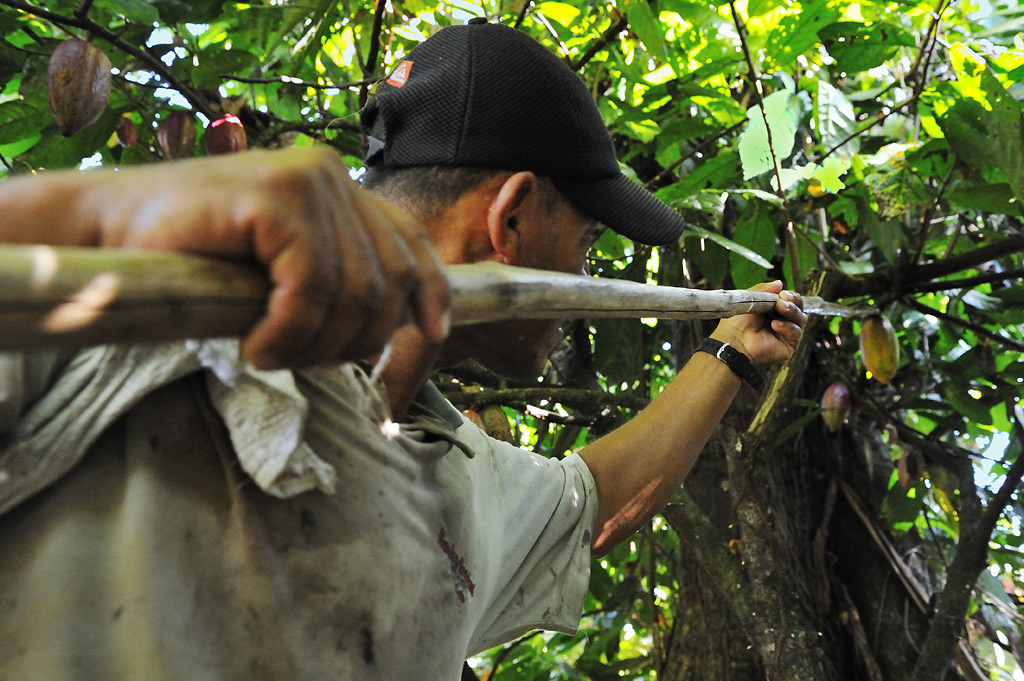 Harvesting cocoa with a long knife ('podão') It
takes two men to do the harvesting. One removes the fruits, the other
gathers them together in a large pile. Together they immediately
proceed to open the fruits to prevent the seeds from sprouting.
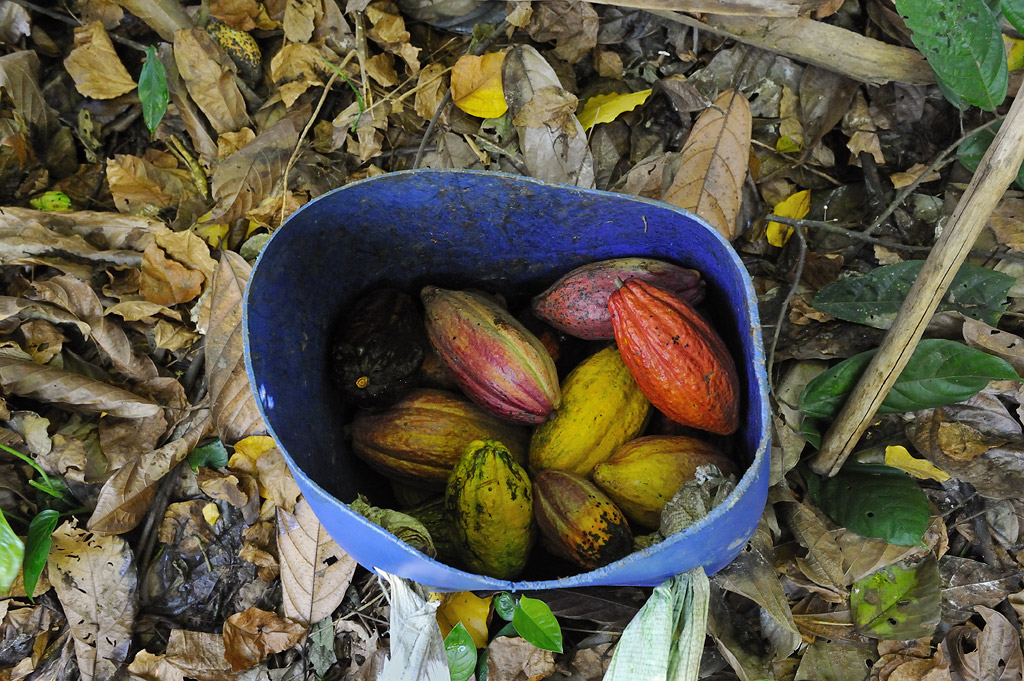 Harvested Pods 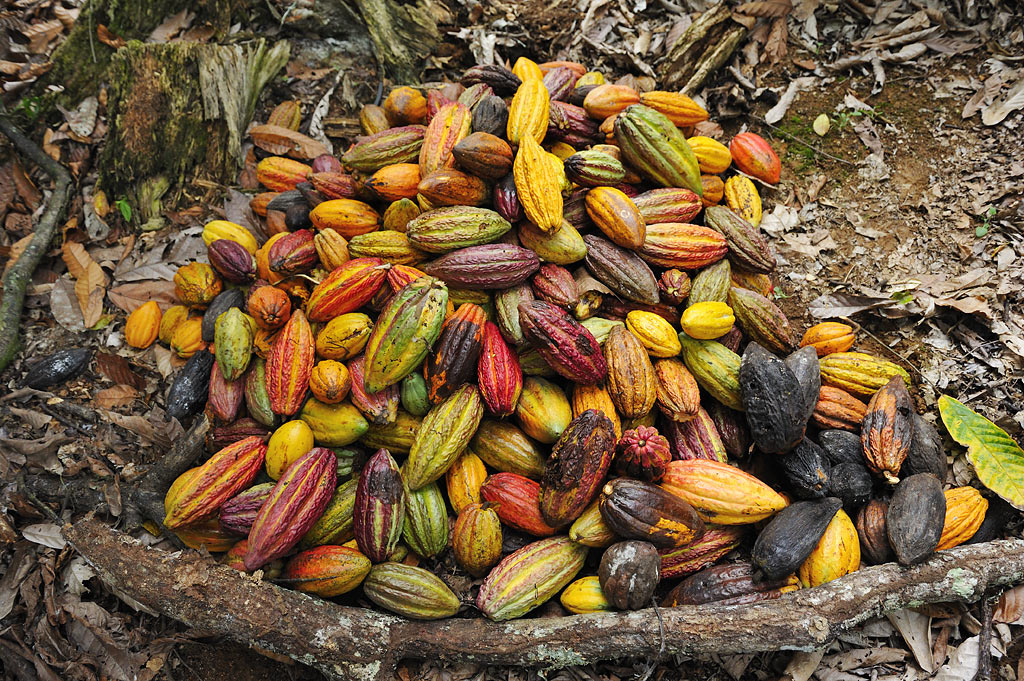 Pile of Cocoa Pods (at the bottom right you can see some pods infested with witches' broomstick fungus) |
|
“OPENING THE PODS”
('Quebrar cacau') After
the harvest, both workers immediately proceed to break open the pods
and extract the seeds. One of them, the “quebrador” or
“breaker”, splits the pod in two just under the stalk with
one hearty stroke of the knife.
He then gives the larger, upper part of the pod to his workmate, the “tirador” or “puller”, who pulls or scoops out the beans and pulp with his thumb and forefinger. Should there be any beans in the small upper half of the pod, the “quebrador” has to clean it himself. This is a golden rule, the “quebrador” informed me. Almost every farm labourer owns a dog as his loyal companion. Although it was forbidden to take dogs into the fields to work, there was always at least one dog with us.  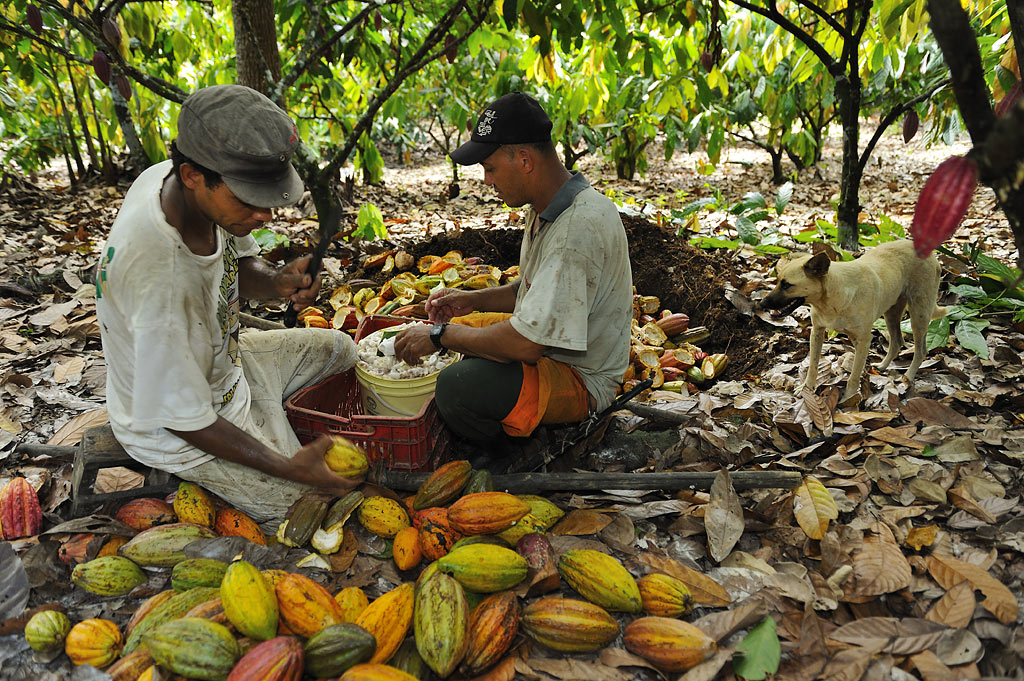 Cocoa harvest: splitting the pods - there was always a dog around 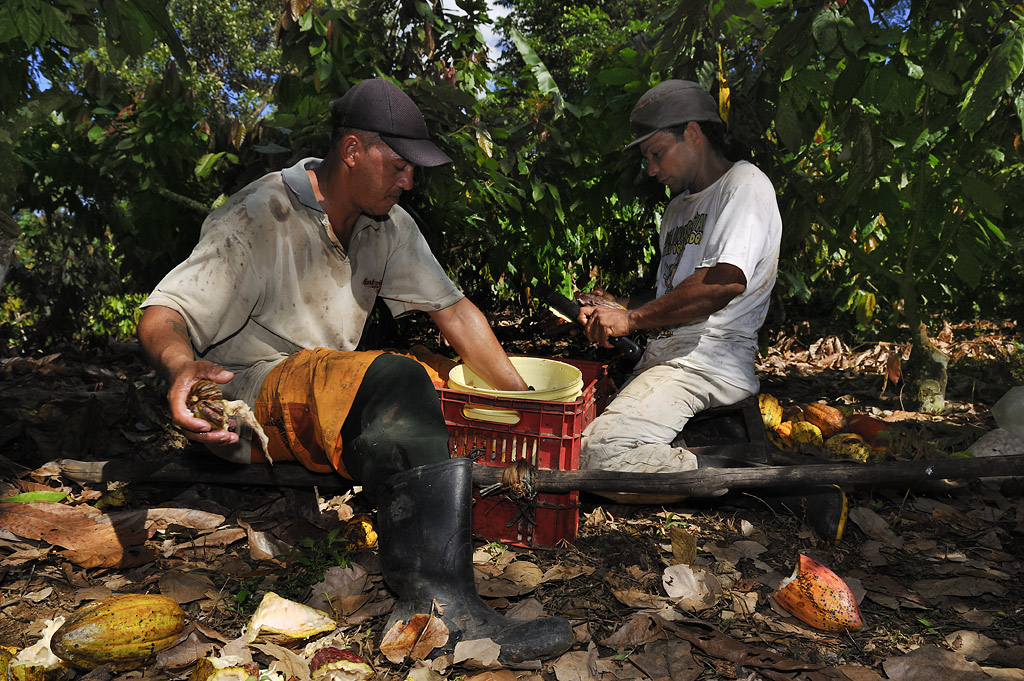 Cocoa harvest - breaking open the pods 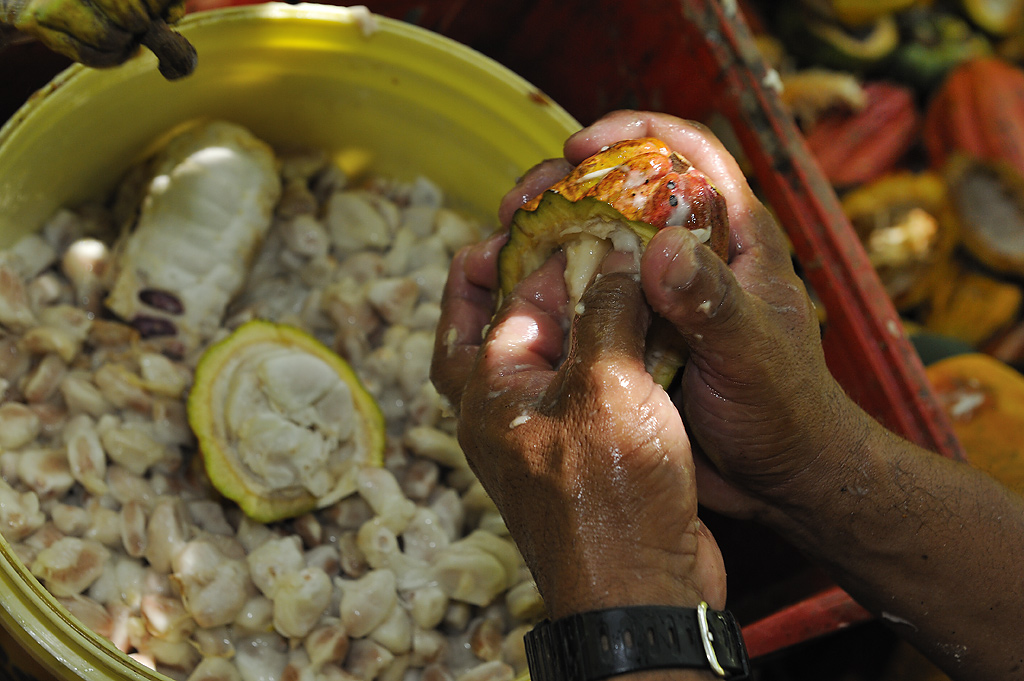 Scooping out the beans (detail) The pulp tastes deliciously sweet and refreshing. That is why the workers enjoy sucking the beans and the juicy pulp.
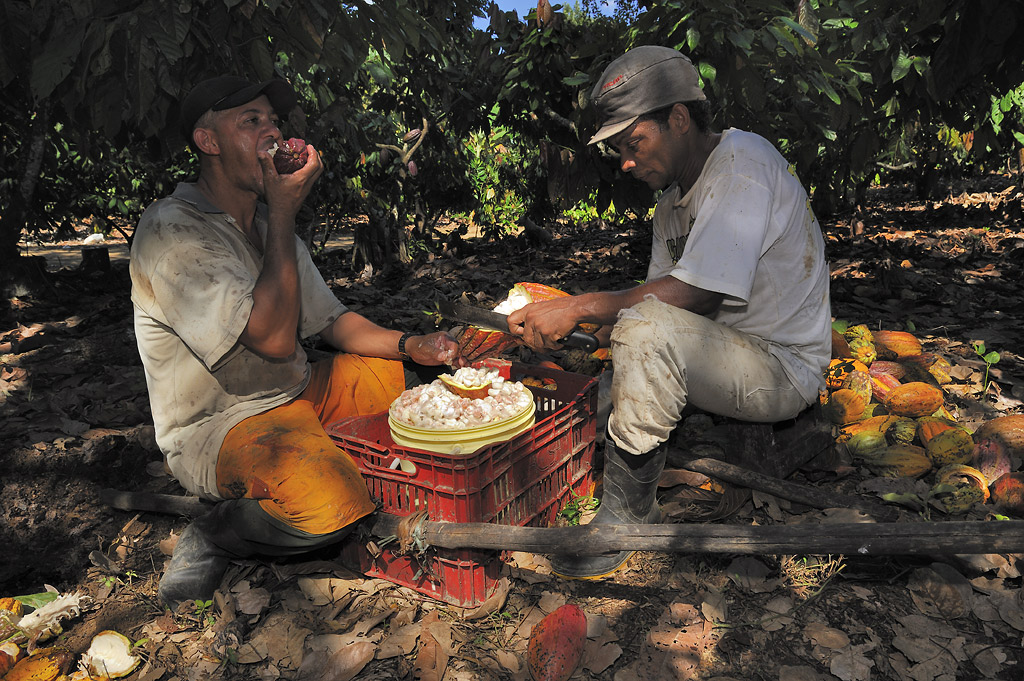 Cocoa harvest: the workers love sucking the beans 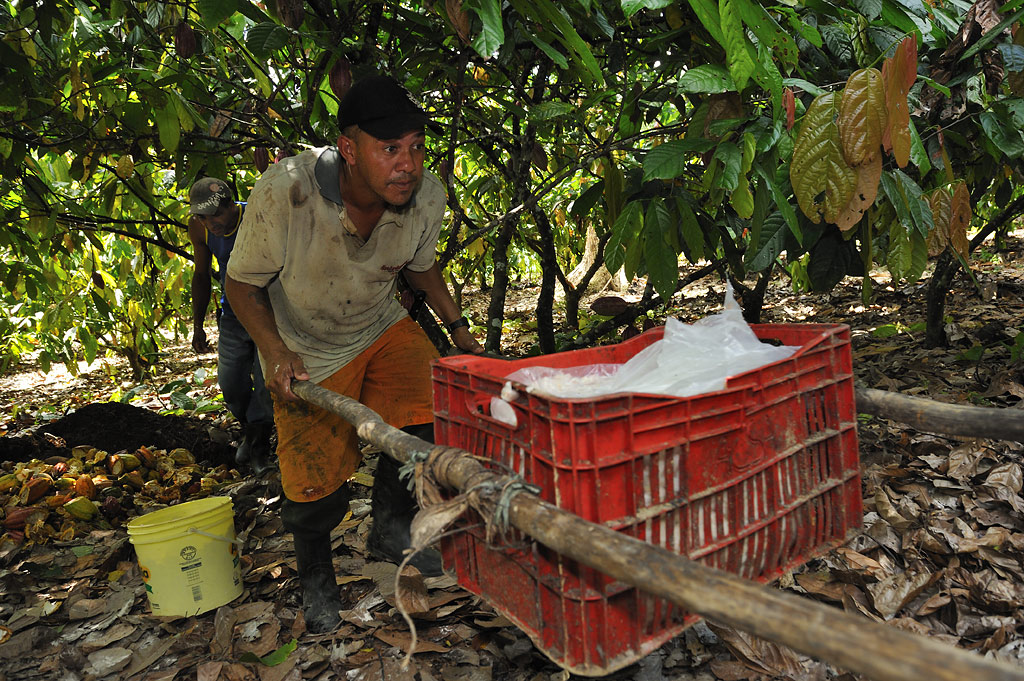 Cocoa harvest: taking away the beans Even more popular amongst the workers is the fruit juice they call cocoa-honey
('mel de cacau'). Before the harvest is taken away, they press the
fleshy beans and drink the sweet juice on the spot. Of course they let
me try the cocoa-honey too, warning me mischievously that it was not
merely delicious but also an aphrodisiac!
For the other labourers, it was a kind of sport to try to steal some of the cocoa-honey from the “quebrador” and “tirador” when they were distracted. They succeeded several times. 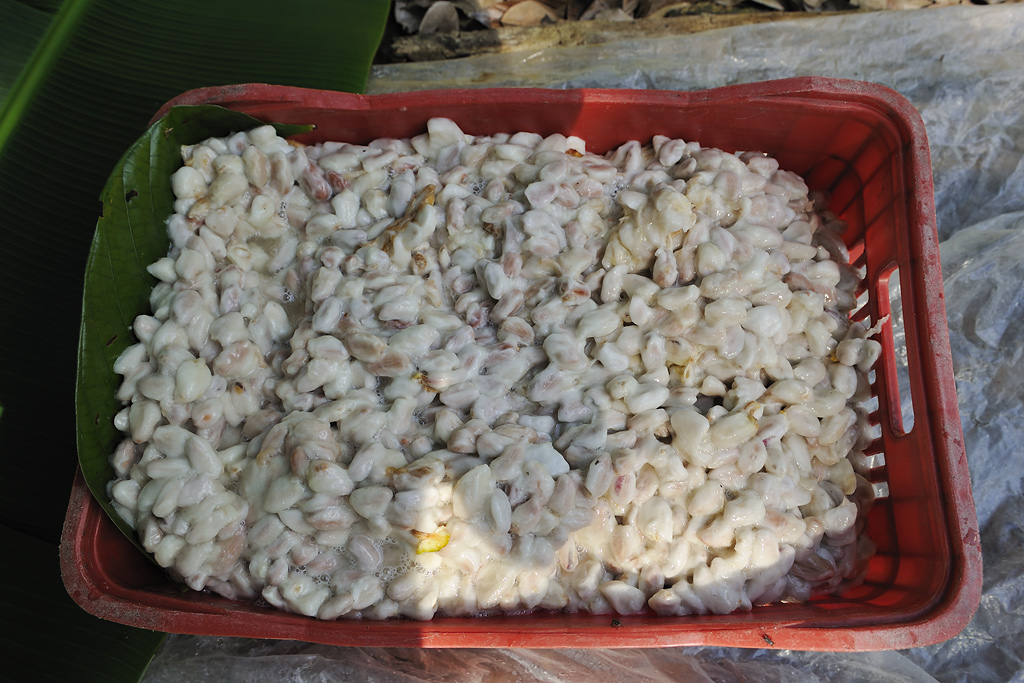 Freshly harvested cocoa seeds ('cacau mole')
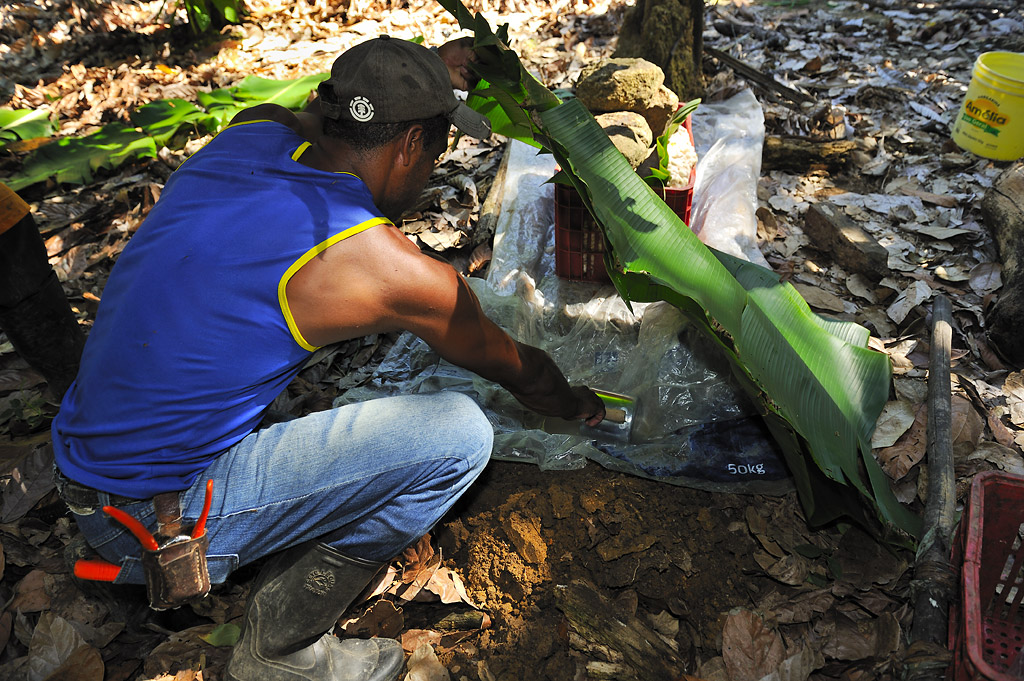 Stealing the cocoa-honey: a moment of distraction is exploited mercilessly... 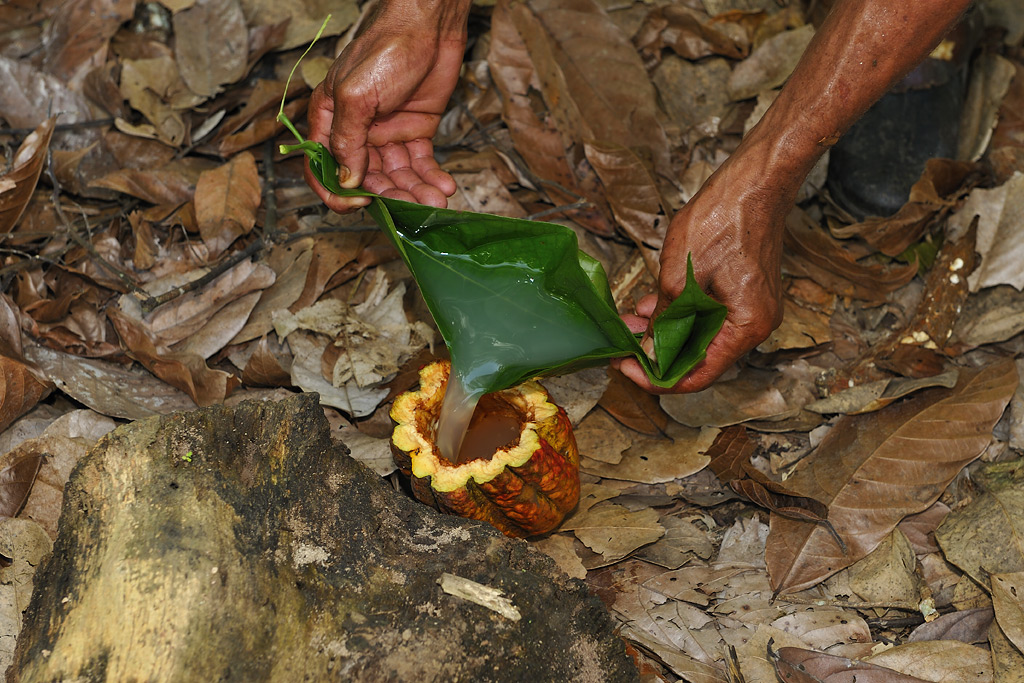 Another successful attempt at pinching cocoa-honey TRANSPORTING THE COCOA HARVEST ('Transporte de cacau') Everaldo
is a “tropeiro“ – a drover. As such, he is
responsible for the mule herd (“tropa”) and thus also for
the transportation of the cocoa bean harvest. He collects the soft
cocoa beans from the plantation and brings the load in baskets directly
to the fermentation house.
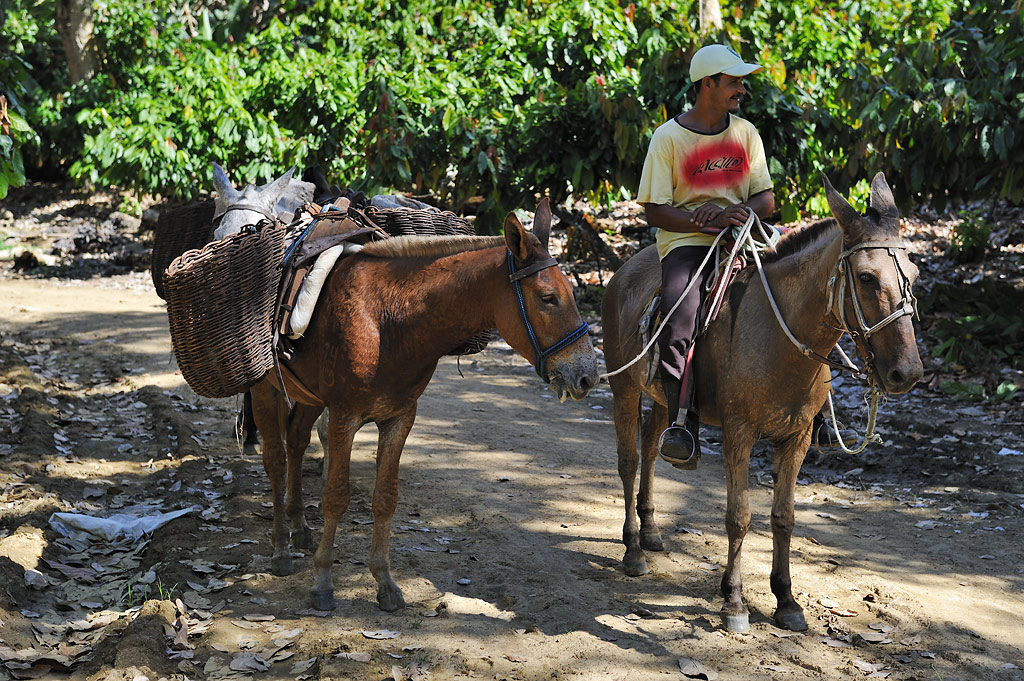 The drover transports the fresh cocoa seeds 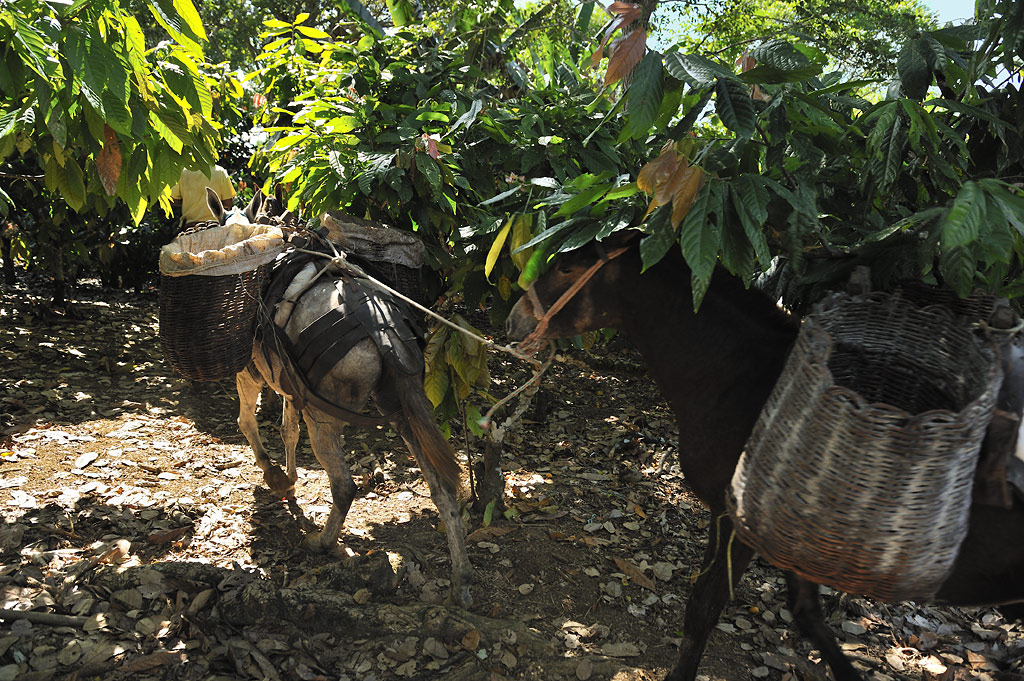 The mule herd on the plantation 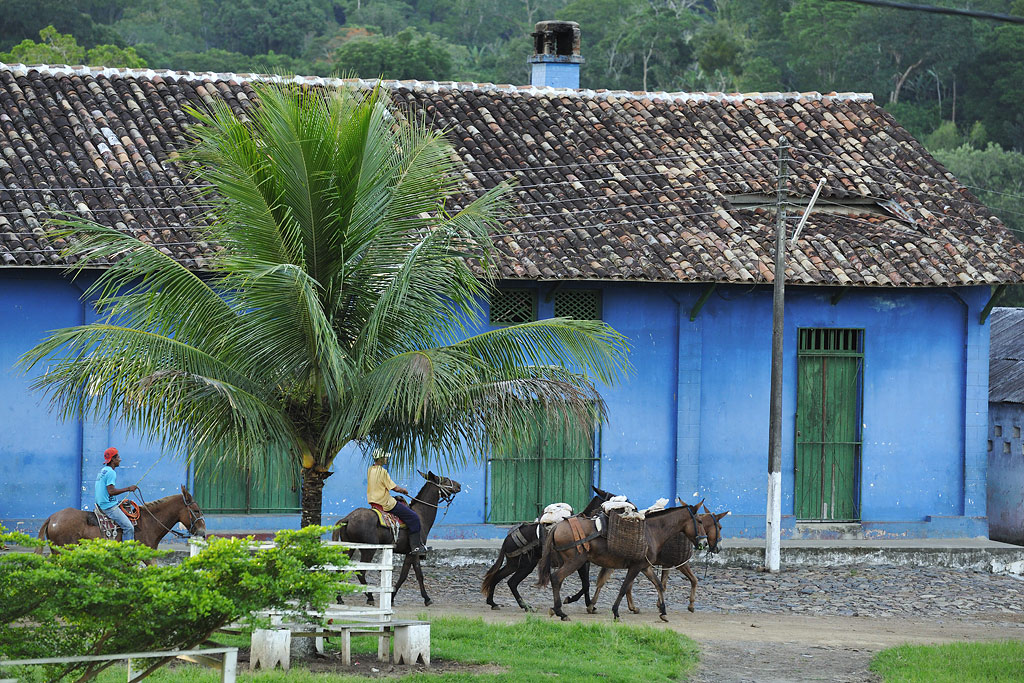 The mules en route to the fermentation house 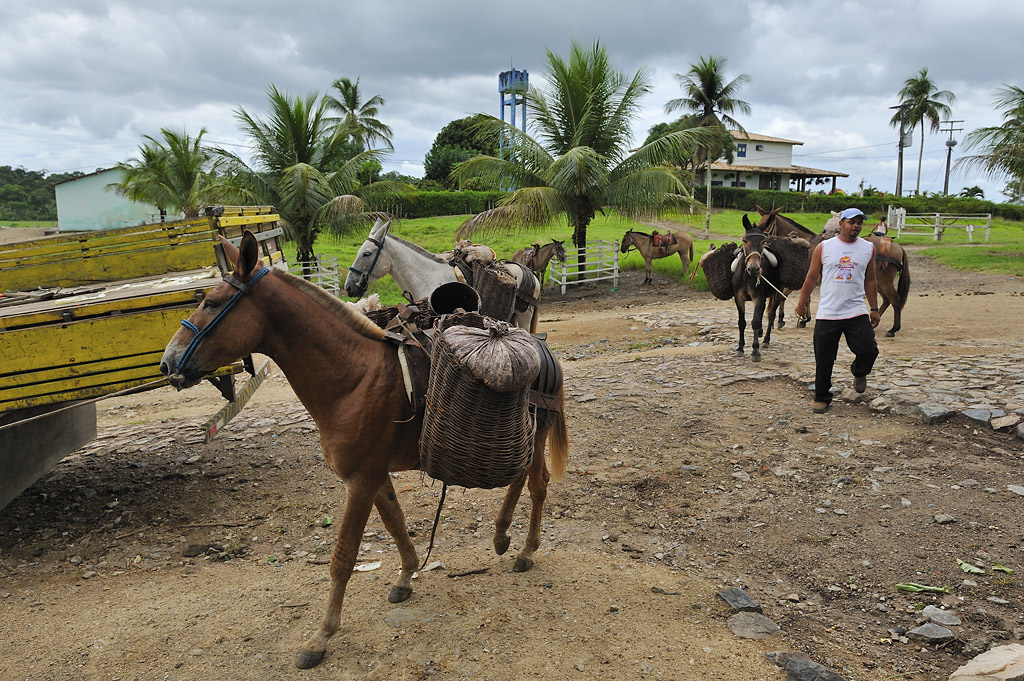 Arrival of the cocoa harvest ('chegada do cacau') 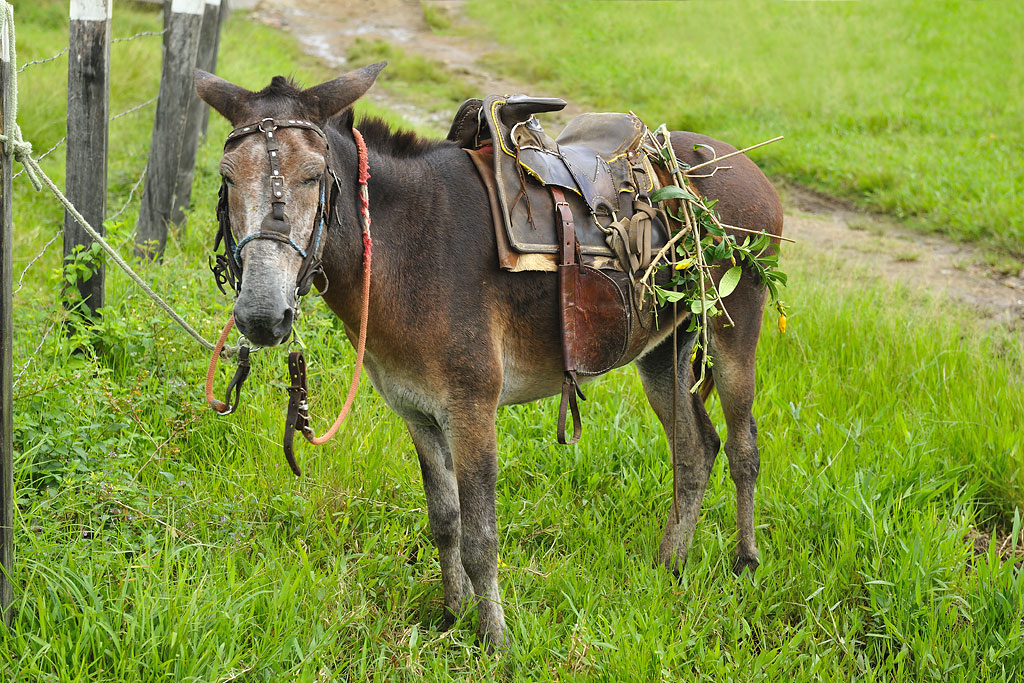 The most senior member of the herd, quite exhausted - my favourite mule 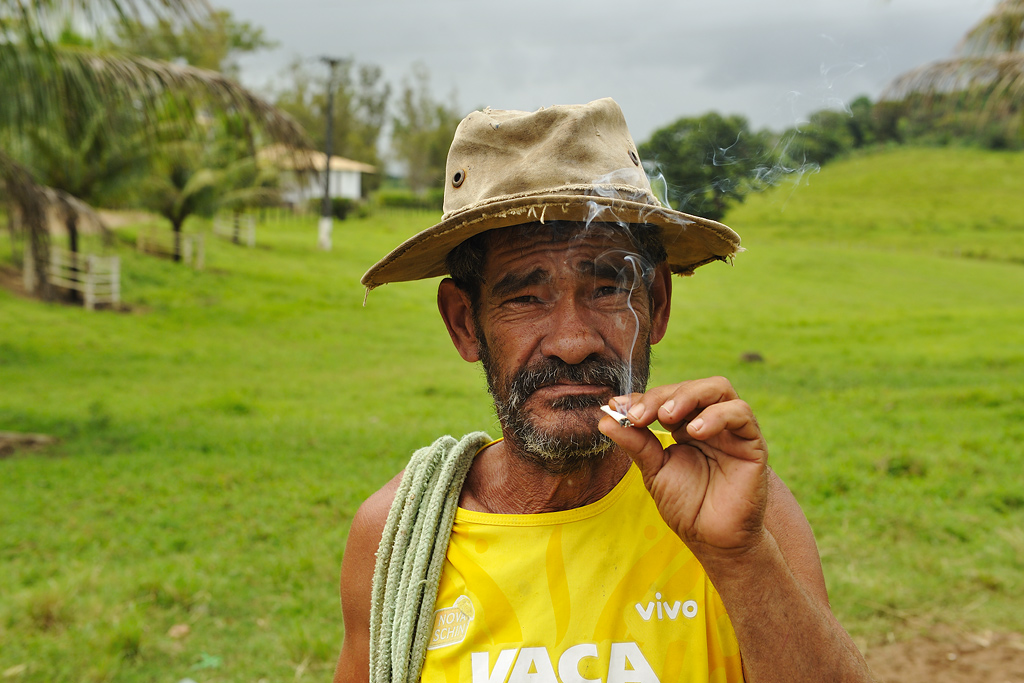 Fridundino, one of the drovers THE FERMENTATION PROCESS ('A fermentação') As
soon as Evereldo arrives with the herd at the fermentation house, he is
met by fellow workers who unload the harvest and empty it into the
containers for fermentation.
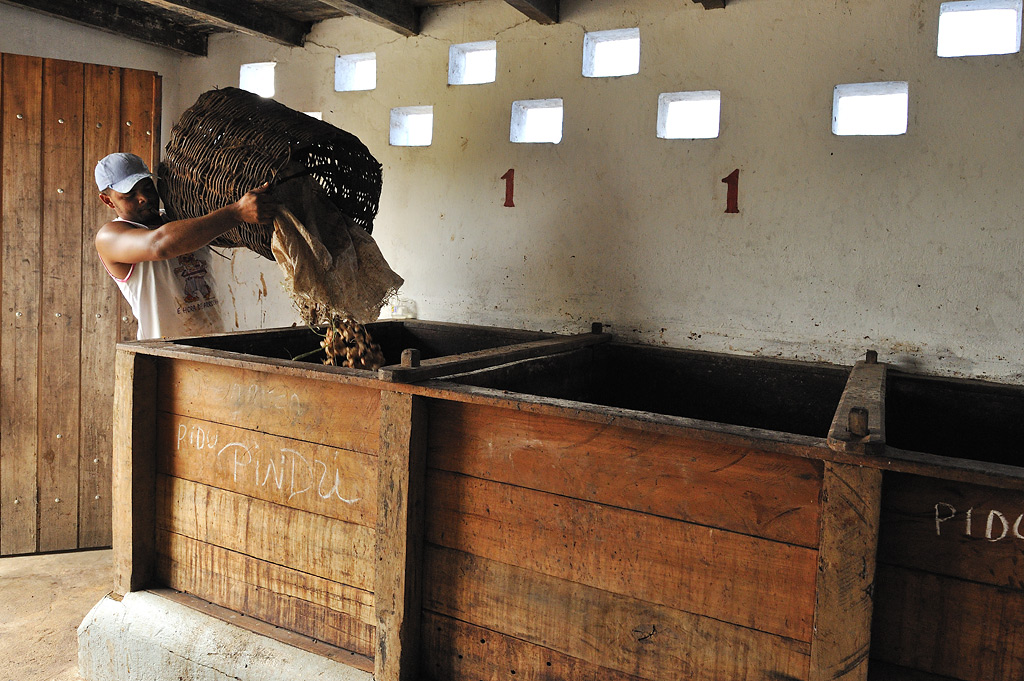 In the fermentation house ('casa de fermentação') 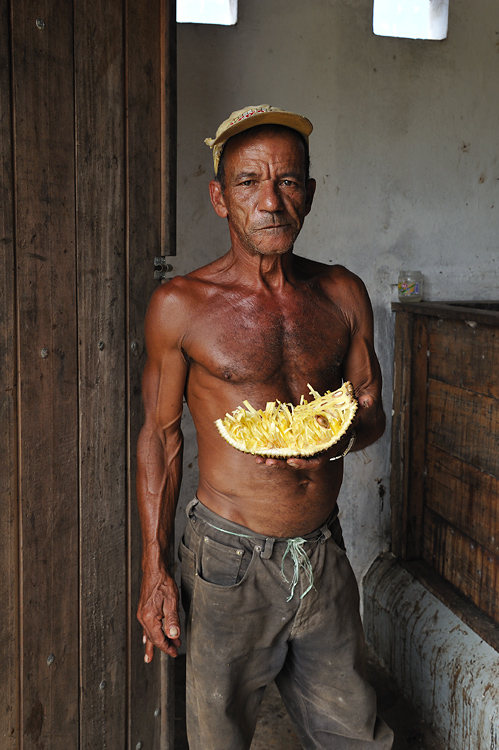 Manuel is one of the 'barcaceiros' of the farm. A 'barcaceiro' is responsible for the fermentation and drying of cocoa From this moment on, the barcaceiro tends to the cocoa beans. One of these barcaceirosis
Manuel. We know him already from the beginning of the report. His
task is to ensure that the cocoa seeds ferment properly and then dry
thoroughly. The seeds ferment for about one week in their containers.
Manuel takes particular care to guarantee that “fresh”
beans are not mixed together with “older” ones and thus
ensure an equal state of fermentation.
That is why, during the entire fermentation process, Manuel shovels the cocoa beans 4 or 5 times, back and forth between 2 containers of the same identification number. “This prevents mould forming” he explains. 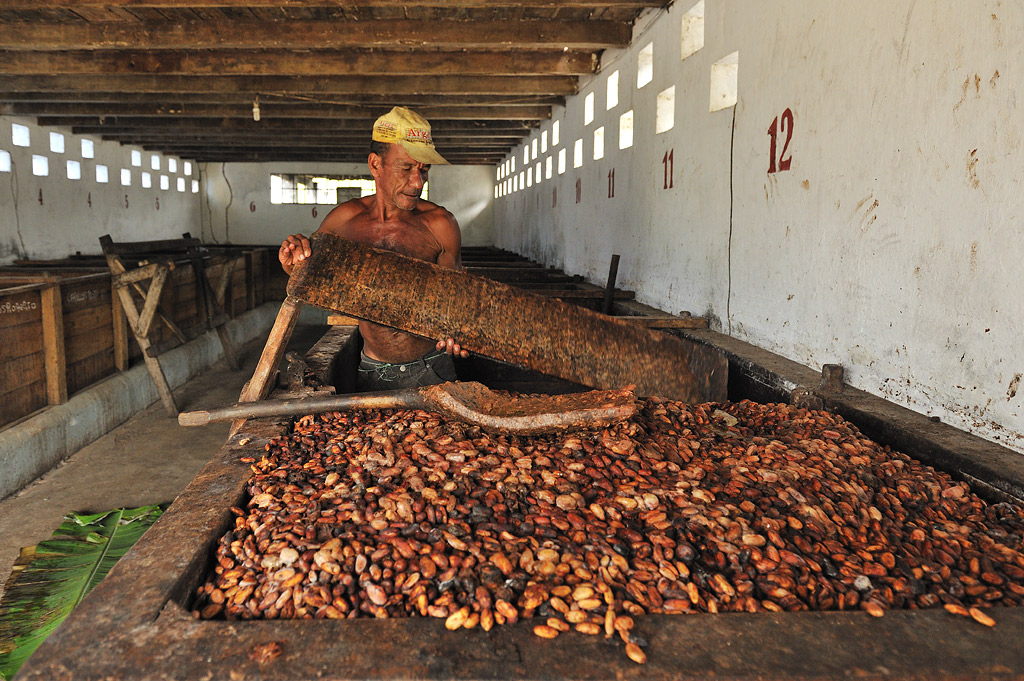 Manuel opens the fermentation container While
moving the cocoa seeds back and forth Manuel begins to sweat because
the pulp-covered beans are still very heavy. Besides producing a
pungent, sweet-sour smell, the bioreaction of the fermentation process
also produces an increase in temperature of up to 60 C. The sugary pulp
decomposes and in time dissolves almost completely.
The seeds lose their ability to germinate during the fermentation process and can thus be stored. They turn brown, lose part of their bitter qualities and begin to develop their typical, delicious, chocolate flavour. After fermentation, the cocoa seeds are then called cocoa beans ('amêndoas de cacau'). 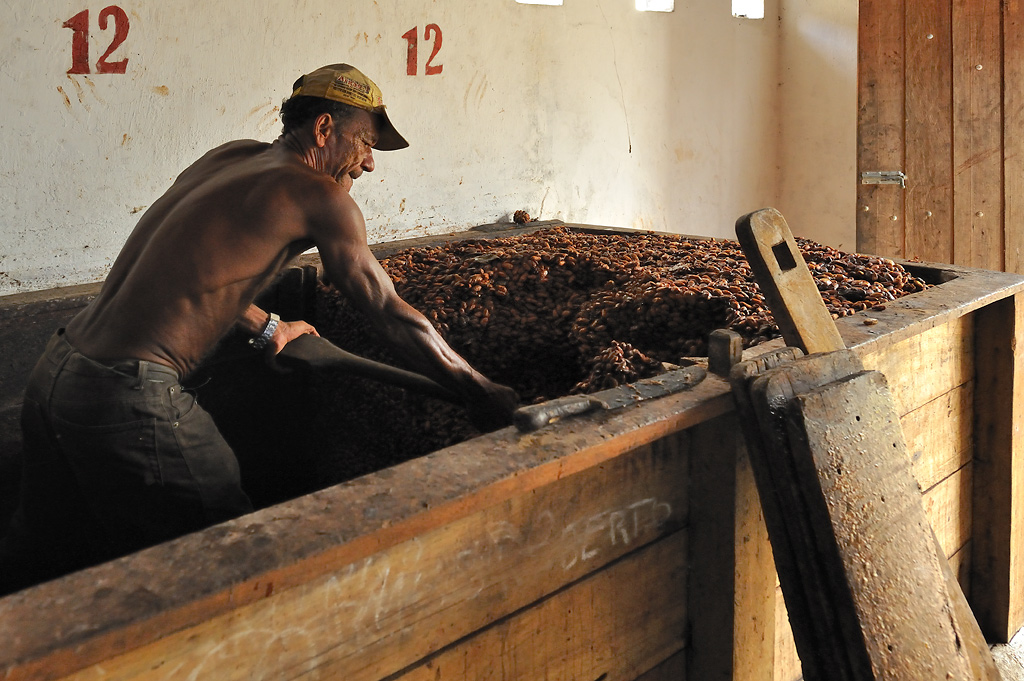 Manuel in the fermentation container 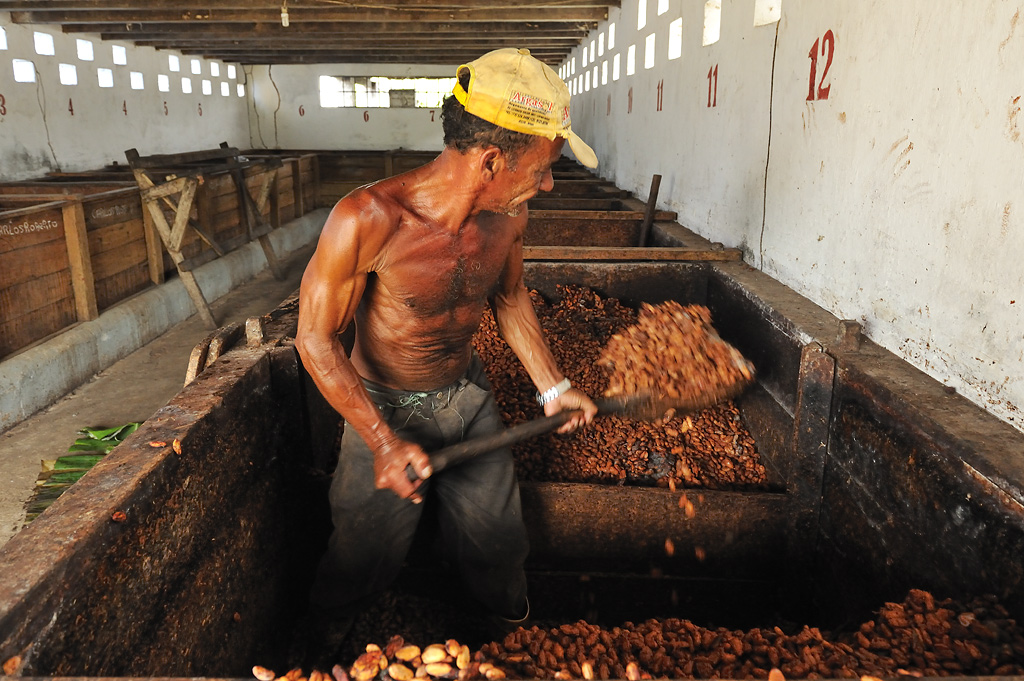 Manuel redistributes the cocoa. This is to prevent mould growth during fermentation |